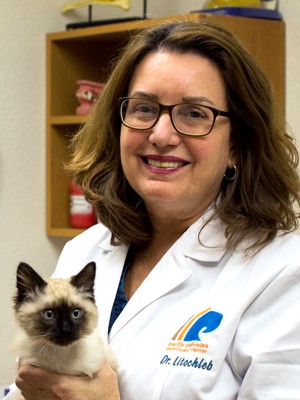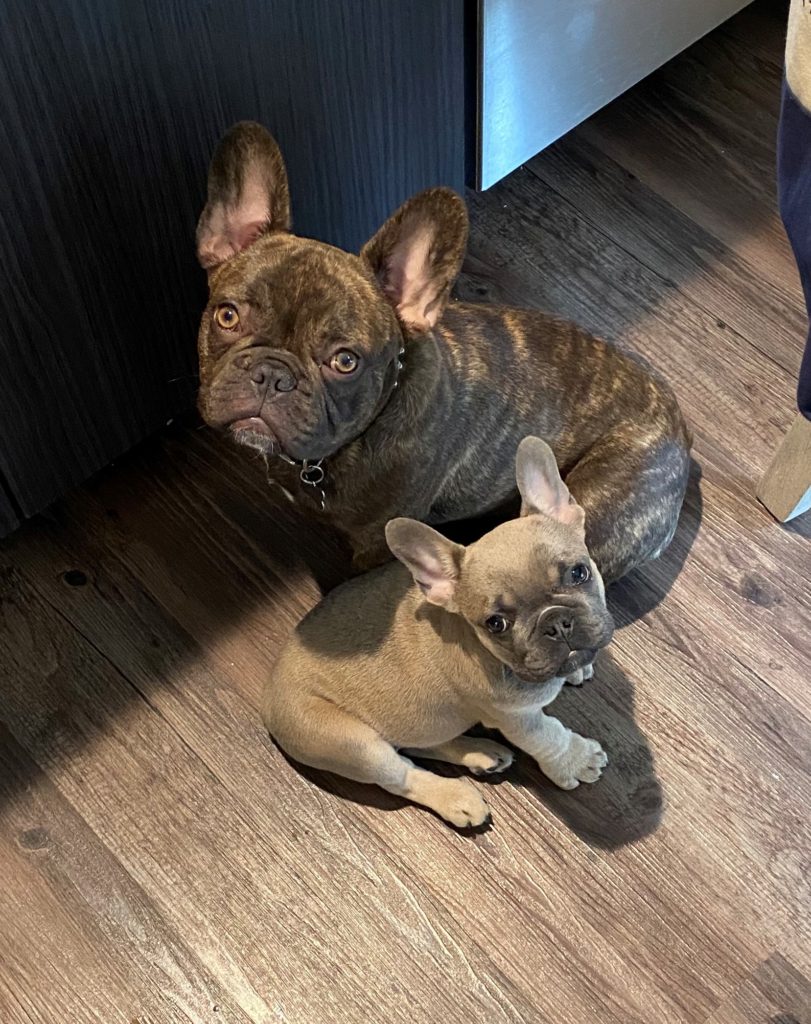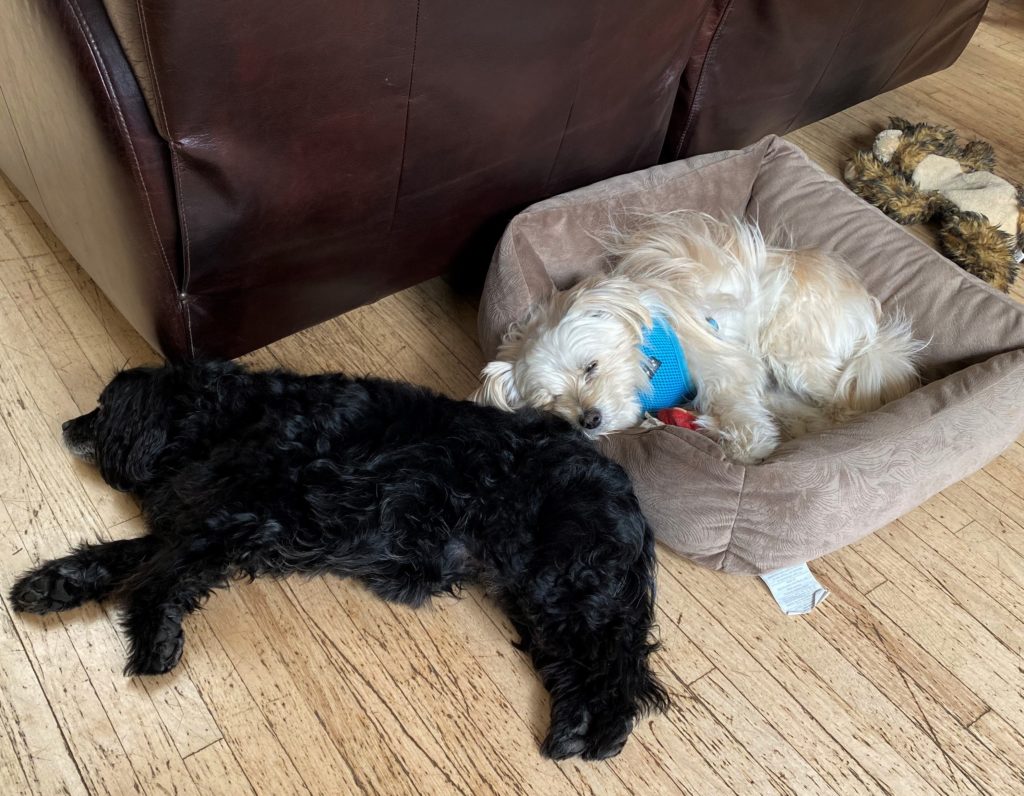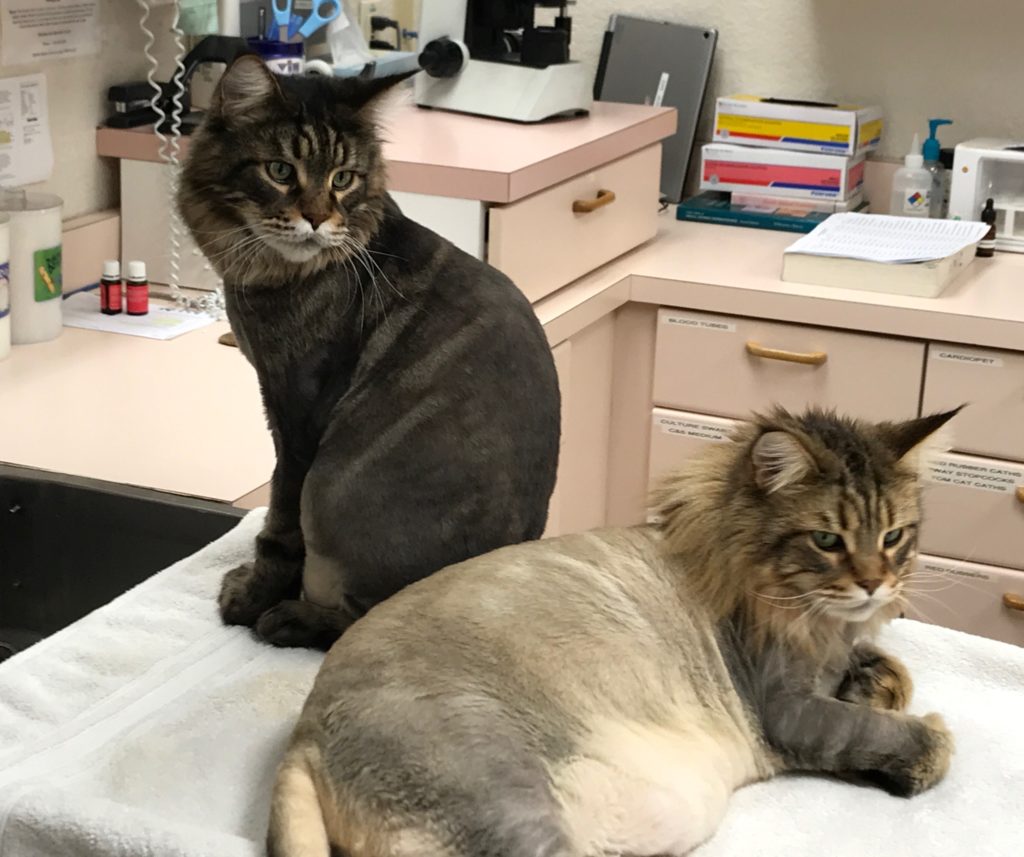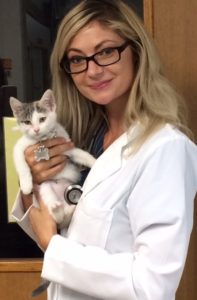Do you fight with your spouse about what you should feed your pets and how much? Are your pets overweight or just “big-boned?” Are some food brands superior to other brands? And what about table scraps—should your dog eat what you eat?
Circling the News sought out answers from Dr. Catalina “Kathy” Litochleb (Dr. L.), who has owned the Pacific Palisades Veterinary Center on Via de la Paz since July 1993.
It turns out that feeding a pet can be as complicated as a human’s diet, but homo sapiens and pets have something in common: overeating can result in health issues caused by obesity.
I also learned that fat pets can have the same health issues as overweight people, such as diabetes, fatty liver, arthritis, breathing issues, internal fat around the organs and a higher incidence of bladder infection.
“Pets are just like people, they need exercise and the right amount of food,” Dr. Litochleb said, noting that the amount of exercise depends on the breed. For example, Australian shepherds are high energy and need a lot of exercise, while a Bichon Frise needs minimal exercise.
Certain breeds are not great walkers because they having difficulty breathing, thanks to their shortened snouts or “brachycephalic.” They include English and French bulldogs, bull mastiffs, Boston terriers, boxers, pugs, shih tzus, Lhasa apsos and Pekingese.
“It also depends on how you’ve raised them,” the veterinarian said. “If a puppy is used to going on a walk every day, they’ll want to do that.”
In hot weather, how long should you walk/exercise them? “They’re wearing a fur coat, so if you put on a warm jacket, you’ll know exactly how to regulate the walk,” she said, smiling.
Okay, exercise is taken care of, sort of, depending on the breed, but how much and what kind of food do I give my two rescue dogs? How can you tell if your pet is overweight?
“Make it simple,” said Dr. L., quoting Hippocrates: “Let food be thy medicine and medicine be thy food.”
Just like with people, one can’t determine if an animal is fat by the weight, but rather must assess its overall body conditioning: “How much muscle and how much fat is over the ribs,” Dr. L. said. “In Pacific Palisades, a lot of dogs are underweight.”
If you’re not sure about your pet — is it overweight, underweight or just fine? — you can make an appointment and come in for a body-condition check (your pet, not you!).
“We don’t charge for that,” said Dr. L., who also offers free dental exams to let you know if something should be done about your dog or cat’s teeth. But with Covid-19 and a shortage of veterinary workers, one needs to make an appointment for these free checkups.
What food should you buy your pet? Kathy said that basically there are two kinds of food: that which can be purchased in a store or food that needs a prescription.
Dogs that have kidney or heart disease, and seniors and puppies, might require a specific food and a vet prescription.
Dr. L routinely recommends three brands: 1) Purina, 2) Hill Science and 3) Royal Canine. She feels comfortable with those three companies because of their research centers. She has personally visited the $40 million Hill Science center in Topeka, Kansas.
“There are Ph.D.’s working on formulations and it’s all evidence based,” Dr. L said, which means she knows exactly what the pet is getting. The other brands on the market “might be fine, but they don’t send me the research.”
She noted that some companies are selling expensive dog food, but she personally can’t comment on it, because she hasn’t seen how the food was developed.
“Go with one of the three,” she recommends, because you know exactly what your pet is getting.
Can I give my dogs treats or human food? “Don’t even introduce them to human food,” she said. “That way they won’t know what they are missing.”
Treats are okay — if they are healthy. But as the doctor points out, “We don’t even know what to feed people—look at all the diets out there. It can get really crazy. I think moderation is probably best.
“It’s an in-depth and complex discussion,” she continued. “You can get 10 vets who all have a different opinion.”
Dr. L also warned that a dog can get too much protein, but that cats need a high protein diet.
I asked about mixing a little wet food with the dry food, and she said, “It makes it more palatable for dogs.”
She recommends giving cats wet food because of their background. “They come from Africa and don’t drink a lot of water,” which makes them more prone to kidney failure and renal disease. Anyone going to the Vet’s office at 853 Via will see her two large Maine Coon cats, Sherlock and Mycroft, who often greet human visitors.
Ultimately, “Food is individual, depending on your type of dog and your lifestyle,” she said.
In addition to speaking “cat” and “dog,” Dr. L. speaks four languages. She was born in Lima, Peru and English is her third language (along with Czech and Italian).
She is the daughter of Czech immigrants, Eva and Vladimir, who left Prague in 1948 when the communists took over. The family eventually left Peru and ended up in New Jersey, where they bought a car and drove to Sherman Oaks. Her father started a pharmaceutical company and moved the family to La Habra and then to Mission Viejo in 1966, which is where Dr. L. graduated from high school.
Litochleb earned a bachelor’s degree in biology at UCLA, but “I didn’t really know what I wanted to do.”
On one of her trips back to Prague to visit relatives, she went to Italy and attended a Montessori language school, where only Italian was spoken. She stayed for a year and met a guy who was in veterinary school. “Anyone could enroll,” she said, “so I did.”
Although the relationship didn’t last, she found a new passion and an advocation. When her visa expired, she returned home and looked into the UC Davis veterinary school, but ultimately returned to Italy to receive her degree.
Her family wanted her back in the United States. She has a sister, Susan, who is a dentist, so she returned and initially worked in Newport Beach for a year and a half before joining a clinic on Sepulveda in West L.A.
Living in Brentwood, Litochleb discovered the Veterinary Center on Via de la Paz and remembers going in to meet the owner, Jon Turvence, who wanted to sell it.
She has since moved to Pacific Palisades and likes to point out, “I don’t have to commute.”
She has about 20 people working at the center, including Dr. Holly Jordan, who joined the practice in 2016. “She’s patient and kind, and I’m lucky to have her,” Dr. L. said.
The vet center, which specializes in small animals, also offers boarding services. Call: 310-573-7707 or visit Palivet.com.

